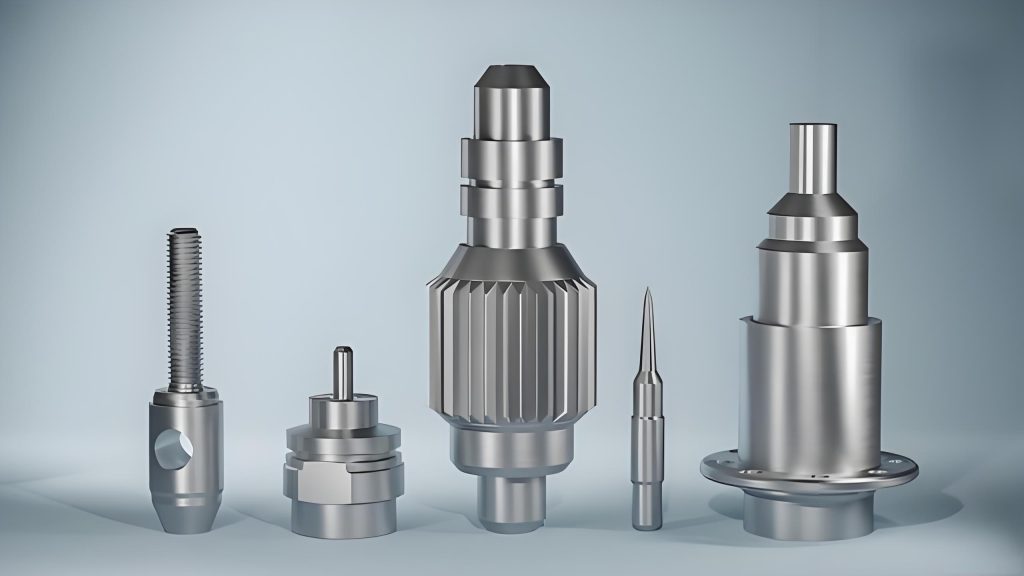Shaft parts are essential components in numerous mechanical and industrial applications. Their proper processing is crucial to ensure the smooth and efficient operation of machinery and equipment. Understanding the processing technology of shaft parts is fundamental for manufacturers and engineers alike.

Material Selection for Shaft Parts
The first step in the processing of shaft parts is the careful selection of materials. Common materials used for shafts include carbon steel, alloy steel, and stainless steel. Carbon steel is often chosen for its good strength and relatively low cost. Alloy steel, on the other hand, offers enhanced properties such as higher strength, toughness, and wear resistance, making it suitable for more demanding applications. Stainless steel is preferred when corrosion resistance is a key factor, such as in food processing or marine environments. The choice of material depends on the specific requirements of the shaft’s intended use, including the load it will bear, the operating environment, and the desired lifespan.
Turning Operation
Turning is a fundamental machining process for shaft parts. In turning, the shaft is rotated while a cutting tool is fed along its surface to remove material and create the desired diameter and shape. High-precision lathes are used to achieve accurate dimensions. The cutting speed, feed rate, and depth of cut need to be carefully controlled to ensure the quality of the surface finish and the dimensional accuracy of the shaft. For example, in the production of automotive axle shafts, precise turning is essential to ensure proper fit and alignment with other components. The operator must also consider the hardness of the material and select the appropriate cutting tool to avoid tool wear and damage.
Milling Operation
Milling is another important process in shaft part processing. It is used to create features such as keyways, grooves, and flats on the shaft surface. Milling machines with different types of cutters can perform a variety of operations. For instance, an end mill can be used to create a flat surface perpendicular to the shaft axis, while a side mill can produce grooves or slots. The orientation and movement of the cutter relative to the shaft are precisely controlled to achieve the required geometry. In the manufacturing of industrial gear shafts, milling is used to create the teeth and other critical features, which require high precision and accuracy to ensure proper meshing and power transmission.
Grinding Operation
After turning and milling, grinding is often employed to achieve an extremely smooth surface finish and precise dimensional tolerances. Grinding wheels with fine abrasives are used to remove small amounts of material from the shaft surface. This process is crucial for shafts that operate at high speeds or require a tight fit with other components. For example, in the production of spindle shafts for machine tools, the surface finish and roundness achieved by grinding directly affect the performance and accuracy of the machine. The grinding parameters, such as the speed of the grinding wheel and the feed rate of the shaft, need to be optimized to obtain the best results.
Heat Treatment
Heat treatment is an essential step in the processing of many shaft parts. It can improve the mechanical properties of the material, such as hardness, strength, and toughness. For example, quenching and tempering are commonly used heat treatment processes for steel shafts. Quenching rapidly cools the shaft to increase its hardness, and tempering is then performed to reduce brittleness and improve toughness. In some cases, annealing may be used to relieve internal stresses in the material. The proper selection and control of heat treatment parameters are critical to achieve the desired properties without causing distortion or other defects in the shaft.
Surface Coating and Protection
To enhance the corrosion resistance and wear resistance of shaft parts, surface coating and protection methods are often applied. This can include plating with materials such as chromium or nickel, or applying a layer of paint or other protective coatings. The coating not only protects the shaft from the environment but can also improve its appearance. For example, in the production of shafts for outdoor equipment or in corrosive industrial settings, a corrosion-resistant coating is essential to ensure the long-term durability of the component.
Quality Control and Inspection
Throughout the processing of shaft parts, strict quality control and inspection procedures are implemented. Dimensional measurements are taken using precision measuring instruments such as micrometers and calipers to ensure that the shaft meets the specified tolerances. Surface roughness is also measured to evaluate the quality of the finish. Non-destructive testing methods, such as magnetic particle inspection or ultrasonic testing, may be used to detect internal defects or cracks in the shaft. Any shafts that do not meet the quality standards are either reworked or rejected to ensure the reliability of the final product.
In the highly competitive field of CNC machining, Rapidefficient stands out. They possess advanced CNC machining equipment and a team of highly skilled technicians. Rapidefficient specializes in processing shaft parts with the utmost precision and efficiency. Their expertise in material selection, machining operations, heat treatment, and quality control ensures that each shaft part meets the highest standards. Whether it’s a small batch or large-scale production, Rapidefficient can handle the task with reliability and speed. Their commitment to innovation and continuous improvement makes them a preferred choice for businesses seeking top-notch shaft part processing services.






